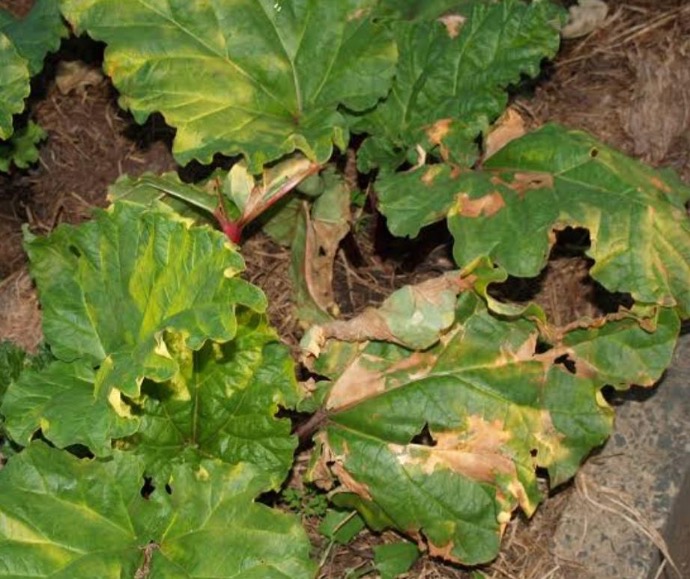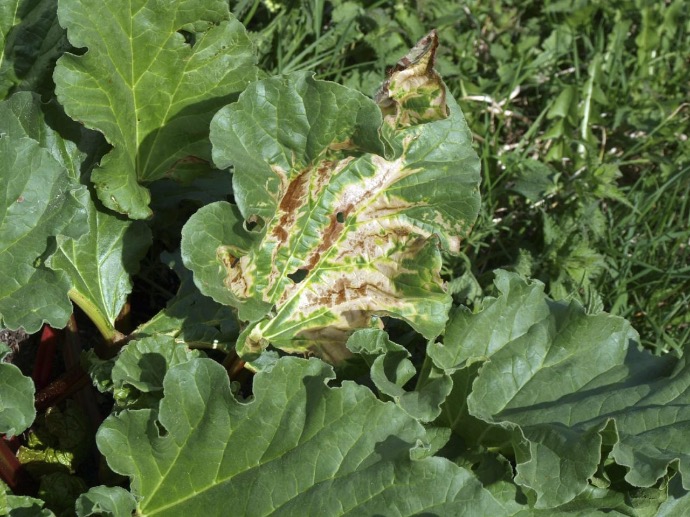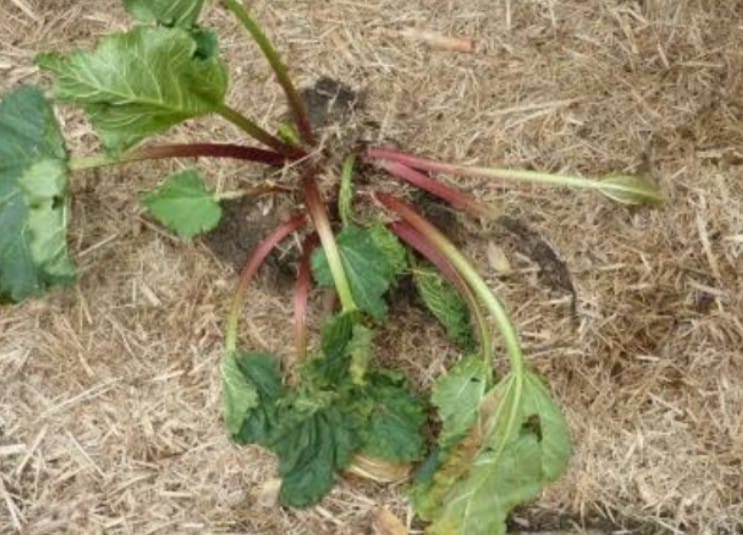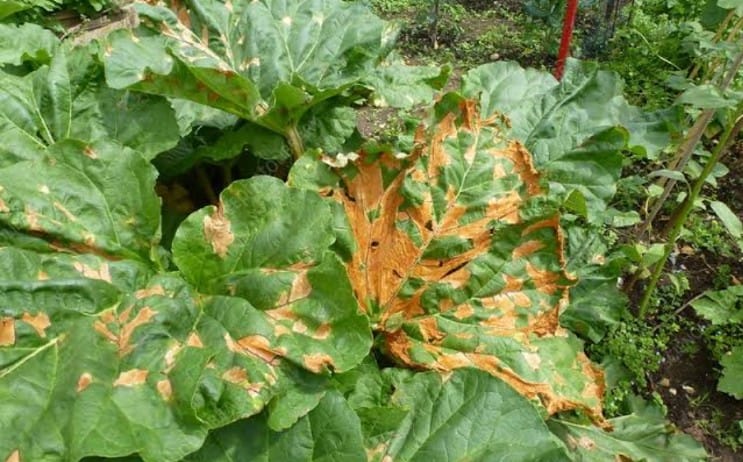Rhubarb Plant
Rhubarb, a herb with moderate growth, prefers well-drained soil and full sun. With high moisture needs, Rhubarb is cultivated for its edible stems, used in culinary desserts and beverages.

Habit
Herb
Height
60-120 cm
Growth
Moderate
Soil
Loamy, well-drained
Shade
Full Sun
Moisture
High
Edible
Yes
Medicinal
Yes
Origin
China, Tibet
Climatic Condition
Temperate
Temperature (°)
5-25°C
Humidity (%)
50-80%
Potting media
Field soil
Fertilizers
Nitrogen-rich fertilizers
Watering
Moderate
Plant Weight
1-3 kg
Flowering Time
Spring to Summer
Soil Ph level
5.5 - 6.5
Water Ph level
5.5 - 6.5
Soil EC
1-2 dS/m
Yield Per Plant
2-5 kg per plant
NPK ratio
10:10:10
life Span
Perennial
Health Benefits
High in fiber, digestive health
Suggested Grow Media or Potting Mix ?
50% loam, 25% compost, 25% sand
Suggested Fertigation/Fertilizers
Fertilize every 6 weeks with a balanced fertilizer.
Common Diseases and Remedies
brown spot
brown to dark brown spots appears on leaves
neem oil
HEALTH BENEFITS
· Rich in fiber, aiding digestion and gut health.
· Contains antioxidants like anthraquinones that have anti-inflammatory properties.
· High in vitamins K and C, supporting bone and skin health.
What Is A Rhubarb?
The exact origins of culinary rhubarb are unknown. Rheum rhabarbarum (also known as R. undulatum) and R. rhaponticum species were already cultivated and used medicinally in Europe before his 18th century.

What Are The Different types of rhubarb?
The 4,444 rhubarb varieties are categorized as red, green, and variegated (pink). 1.Canada Red`:-
often has shorter and thinner stems than other varieties, but it is soft, very sweet, and has a good red color.
2.Cherry Red:-
Has long and thick stems that are dark red inside and out.
3. Crimson Red: –
produces tall, plump, bright red stems.
4.MacDonald`:-
Is fruitful and has bright red stems with soft skin.
5.Victoria:-
Spotted variety that produces medium sized stems.

How do you care for Rhubarb?
1. Location: -
Summer or longer dry periods on very light, well-drained soils. If conditions are too hot and dry, growth will slow or even stop.
2. Sunlight: - Rhubarb grows best when planted in full sun. H. At least 6 hours of direct sunlight most days. Sun Full Sun, Partial
3. Soil: -
Rhubarb prefers slightly acidic to neutral soil pH values. Additionally, they prefer soils that are rich in organic matter to support their growth. The soil should be moist but well-drained.
4. Hydration:-
Rhubarb prefers even moisture. Adult plants can tolerate some degree of drought, but rhubarb must be watered regularly during its first two years of growth. However, do not overwater rhubarb, as wet soil can cause the crown to rot. A good rule is to water the plant when the top inch of soil is dry.

5.Nourishment:-
Rhubarb requires a lot of organic matter such as compost in the soil to grow well. Do not use chemical fertilizers on young rhubarb plants, as nitrates can kill the rhubarb. Organic fertilizer can be added to the plants at the beginning of the second growing season. Pollination: Rhubarb is a self-pollinating plant.
6. Issues: -
Mild gastrointestinal symptoms, Kidney stones , Kidney failure , Stomach pain, diarrhea, vomiting, Blood clotting may be impaired.
What are the benefits of the rhubarb plant?
Maintains healthy bones and reduce the risk of osteoporosis. Supports wound healing. Protection against heart disease. Promotes digestion. Lowers blood pressure. Reduces cancer risk. Anti-inflammatory agent.

FAQ about growing rhubarb plants
1. When is the best time to plant rhubarb?
Rhubarb is usually planted in early spring as soon as the soil can be worked.
2. Where should you plant rhubarb in your garden?
Choose a location with well-drained soil and full sun or partial shade. Avoid places where water can accumulate.
3. How should I prepare the soil for planting rhubarb?
Amend the soil with well-rotted compost or manure to improve fertility and drainage. Rhubarb prefers slightly acidic soil with a pH of 6.0 to 6.8.
4. How far apart should I space my rhubarb plants?
Consider the size of your rhubarb plants and space them approximately 90 to 120 cm apart.
5.What are the Advantages of the rhubarb ?
Maintains healthy bones
Reduce the risk of osteoporosis.
Supports wound healing.
Protection against heart disease.



